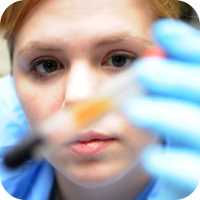
Female sterilisation is a very effective method of permanent birth control. This form of contraception is usually chosen when a woman decides she does not ever want to have children or does not want any more. However, personal circumstances may change and many women choose to have the sterilisation procedure reversed to try and enable them to have children again.
Methods of Female Sterilisation
There are three common methods of sterilisation for women and they all work by sealing the fallopian tubes (the tubes through which the eggs travel from the ovaries to the uterus). This prevents the egg from passing into the uterus and the sperm from travelling up the tube for fertilisation.
Which sterilisation method is performed depends your medical history and the region you live in. The three methods are:
Surgically Sealing
This method involves making a small incision (cut) across the abdomen to get access to the fallopian tubes. The fallopian tubes are then sealed by placing a clip or ring around the tube. The procedure only involves treating the Fallopian tubes and has no direct effect upon the ovaries or uterus.
Surgically Cutting
This method is the same as surgically sealing the tubes, but instead of placing a clip or ring around the tube, the tubes are cut or a section of them is removed.
Hysteroscopic Sterilization
This method of sterilisation for women does not involve any surgical incisions. It is performed using a hysteroscope (a camera on the end of a tube), which is inserted into the womb. Guided by the hysteroscope images (which are sent to a monitor), implants are placed into the fallopian tubes. Over time, these implants cause tissue growth which block the tubes.
Female Sterilisation Reversal
All three common methods of sterilisation for women listed above can be reversed by either surgery or a laparoscopy (key-hole surgery). While female sterilisation is performed under the NHS in the UK, reversal of the procedure is not covered (this may apply to other countries and regions as well). Therefore, you would have to pay for the procedure to be done privately.
Following the reversal operation, a hysterosalpingogram (HSG) can be performed to check if the operation was successful and the tubes are open again. This involves injecting dye through the cervix and then using X-ray imaging to see if the dye is able to travel through the tubes to the ovaries.
Unfortunately, fertility does not always return once the sterilisation procedure has been reversed. The most common reason for fertility not returning is the development of scar tissue around the block in the tube.
The Chances of Fertility Returning Following Sterilisation Reversal
Female sterilisation is intended to be permanent, so the procedure to reverse the sterilisation has variable success rates. These depend upon the initial surgery type, how it was performed and the woman’s age:
- The surgical sealing method of female sterilisation (where a clip or ring is placed round the fallopian tube) has the highest reversal success rate
- If the block or cut was in the middle of the fallopian tube, rather than the end, it also has a higher success rate
- Younger women are also more likely to have their fertility return
Fertility Treatment Should Reversal Be Unsuccessful
If the reason the sterilisation reversal was unsuccessful was due to scar tissue forming, it may be possible to have surgery to remove the scar tissue. However, IVF (In Vitro Fertilisation) is often preferred as it bypasses the need for the fallopian tubes and has a reasonably high success rate.
Anything Else I Should Know?
There are other ways a woman can be sterilised, but these are not done solely for the purposes of birth control. They are also very difficult to reverse, if indeed it is possible to reverse them at all. Examples of these are chemical or radiological procedures, or a hysterectomy. If you have been sterilised by one of these methods, please speak to your doctor who can advise you of the options available to your specific situation.
Links to Popular Related Pages







